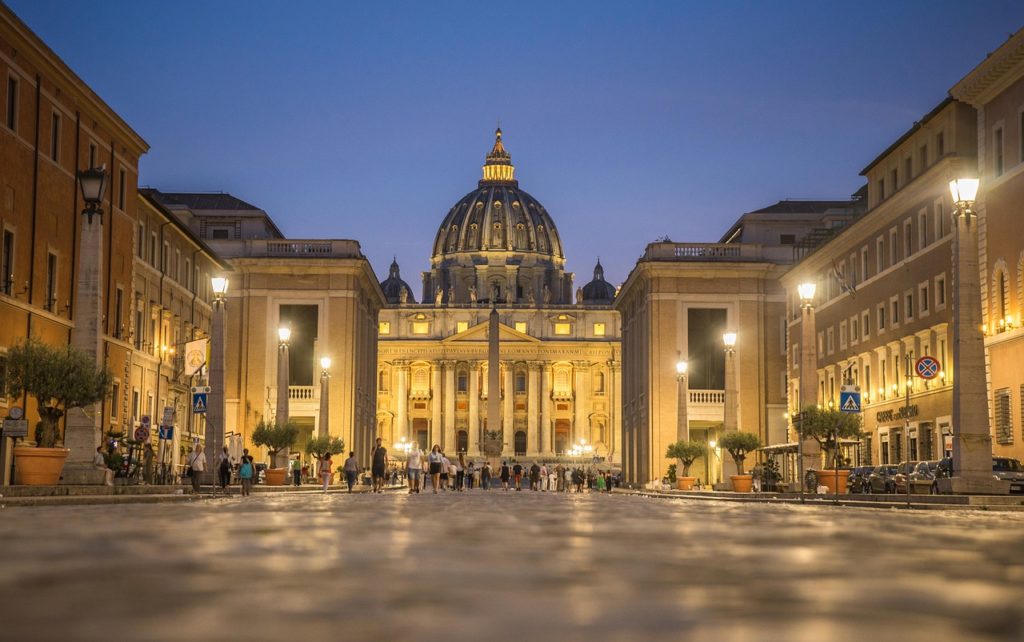Introduction to the Roman Catholic Mass – I
In this brief series on the Roman Catholic Mass, I aim to offer an overview of its essence and highlight the various passages from Scripture that shape and enrich its celebration. While these reflections cannot fully capture the depth and beauty of the Mass, I hope they may help to rekindle a sense of awe and gratitude for this sacred gift in the hearts of those who read them, including my own.
The Roman Catholic Mass is the central act of worship in the Catholic Church. It is both a sacrificial offering and a sacred banquet, where the faithful gather to worship God, hear His Word, and receive the Body and Blood of Christ in the Eucharist. The Mass is not merely symbolic; it is the actual re-presentation (not a repetition) of the one sacrifice of Jesus Christ on Calvary and resurrection, made present in a sacramental way.

The structure of the Mass reflects the worship of the early Christian communities as found in the New Testament, especially in the Acts of the Apostles and the Letters of St. Paul (as we shall see later). It also retains deep roots in Jewish liturgical tradition, such as the synagogue service and the Passover meal. The Mass is divided into two main parts: the Liturgy of the Word and the Liturgy of the Eucharist, both rich with scriptural and theological significance.
The celebration of the Mass is more than ritual; it is a participation in the heavenly liturgy described in the Book of Revelation (see chapter 4 and chapter 5). It is the source and summit of the Christian life (cf. Lumen Gentium, §11).
Primary Sources for Reference
- The Bible – Especially:
- Matthew 26:26–29, Mark 14:22–25, Luke 22:19–20, John 6:51–58, 1 Corinthians 11:23–26 (Last Supper and Eucharist)
- Acts 2:42 (early Christian worship)
- Revelation 4–5 (heavenly liturgy)
- The Roman Missal – The official liturgical book containing the prayers, chants, and instructions for the celebration of Mass. (See here.)
- The Catechism of the Catholic Church (CCC) – See especially §§1322–1419 for comprehensive teaching on the Eucharist and the Mass.
- Sacrosanctum Concilium – The Second Vatican Council’s Constitution on the Sacred Liturgy, which provides theological and pastoral foundations for understanding the Mass.
- Lumen Gentium – Vatican II’s Dogmatic Constitution on the Church; §11 speaks of the Eucharist as the source and summit of the Christian life.
- Writings of the Church Fathers – Such as St. Justin Martyr’s First Apology (Chapter 66–67), which offers one of the earliest non-biblical descriptions of the Mass (c. 155 A.D.).
Structure of the Roman Catholic Mass
I. Introductory Rites
These rites prepare the faithful to enter into the sacred mysteries:
- Entrance Procession & Song: A hymn accompanies the entrance of the priest and ministers.
- Sign of the Cross & Greeting: The Mass begins in the name of the Trinity.
- Penitential Act: The congregation acknowledges their sins and asks for mercy.
- Gloria (on Sundays and Solemnities): A hymn of praise to God.
- Collect (Opening Prayer): The priest prays on behalf of the people, summarizing the intentions of the liturgy.
II. Liturgy of the Word
This part focuses on listening to God’s Word:
- First Reading: From the Old Testament (or Acts during Easter).
- Responsorial Psalm: Sung or recited between readings.
- Second Reading: From the New Testament Epistles (on Sundays and solemnities).
- Gospel Acclamation: Usually “Alleluia” is sung.
- Gospel Reading: The words and deeds of Jesus Christ.
- Homily: The priest explains and applies the readings.
- Profession of Faith (Creed): Recited on Sundays and solemnities.
- Prayers of the Faithful: Petitions are offered for the Church and the world.
III. Liturgy of the Eucharist
This is the heart of the Mass, centered on the Eucharist:
- Preparation of the Gifts: Bread and wine are brought to the altar.
- Prayer over the Offerings: The priest prays for God’s acceptance of the gifts.
- Eucharistic Prayer:
- Preface & Sanctus (“Holy, Holy, Holy”)
- Epiclesis: Invocation of the Holy Spirit.
- Institution Narrative & Consecration: Bread and wine become the Body and Blood of Christ.
- Anamnesis: Remembering Christ’s Passion, Resurrection, and Ascension.
- Intercessions: Prayers for the Church and the living and the dead.
- Doxology & Great Amen: Praise to the Trinity.
IV. Communion Rite
This prepares and leads to receiving the Eucharist:
- Lord’s Prayer
- Sign of Peace
- Lamb of God (Agnus Dei)
- Reception of Holy Communion
- Silent prayer or hymn of thanksgiving
V. Concluding Rites
The faithful are blessed and sent forth:
- Final Blessing
- Dismissal: A mission to live out the Gospel.
This structure follows a logical and spiritual progression: we gather, listen to God’s Word, offer our gifts, receive Christ, and are sent out to be Christ to the world. Let me know if you’d like a visual chart or handout version of this summary.
In the next article in this series we shall take a deeper look at the Introductory Rite and the Liturgy of the Word.